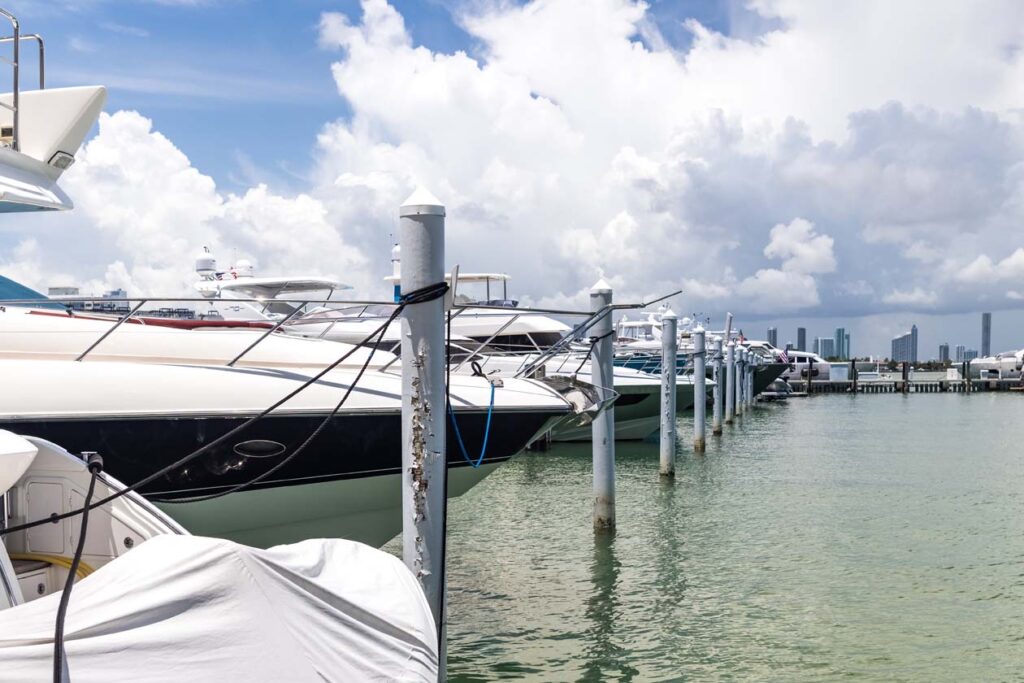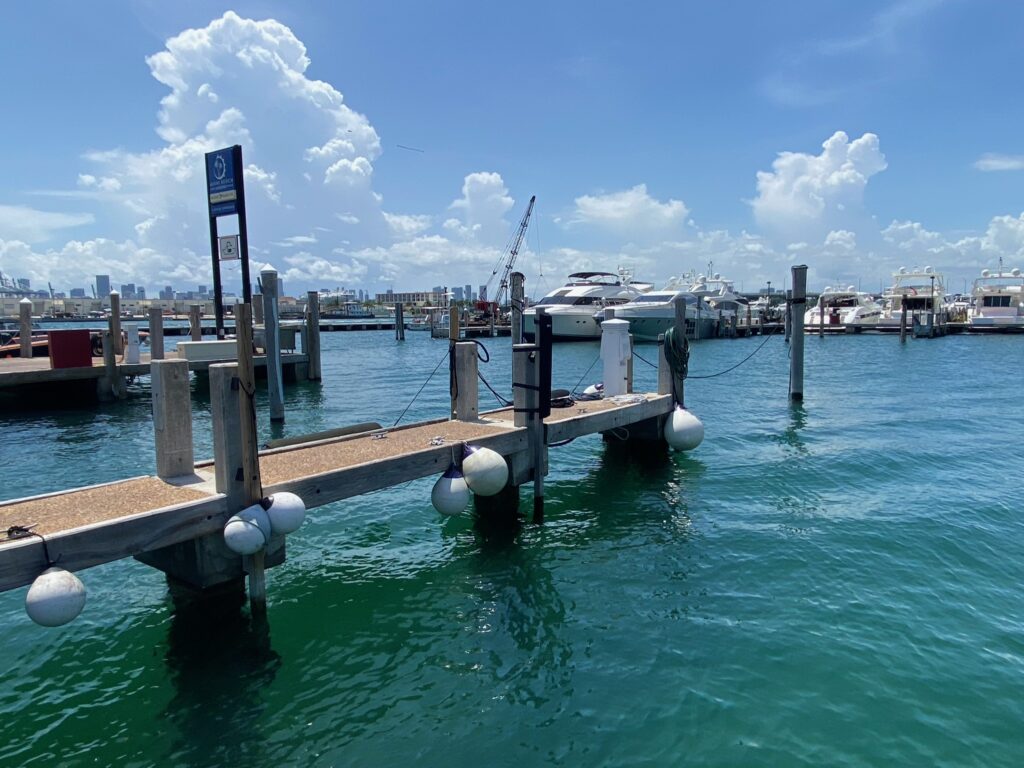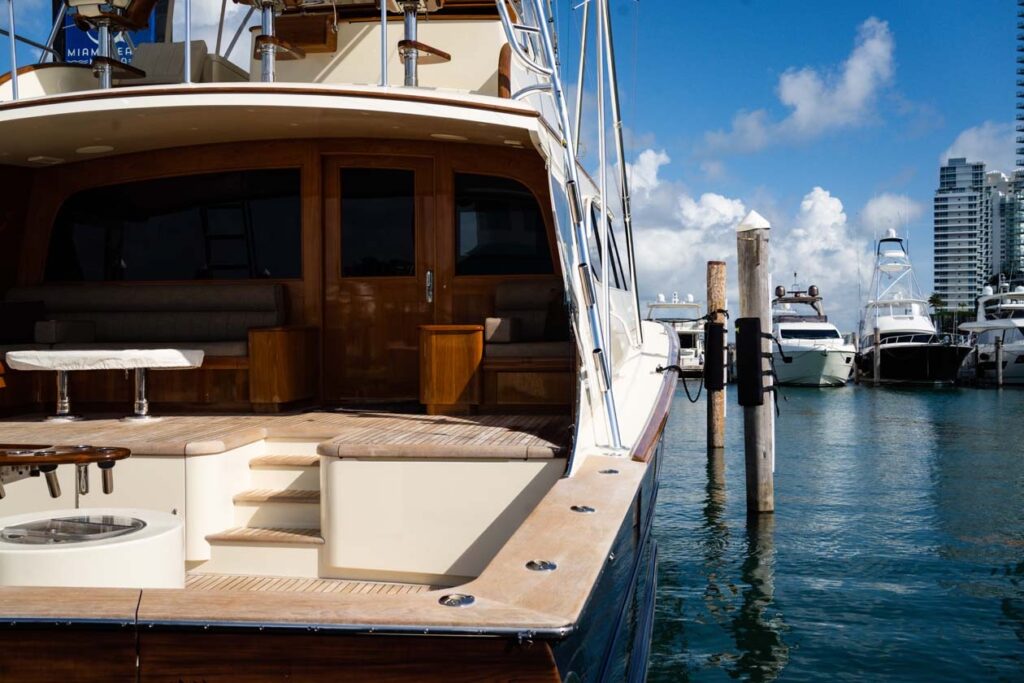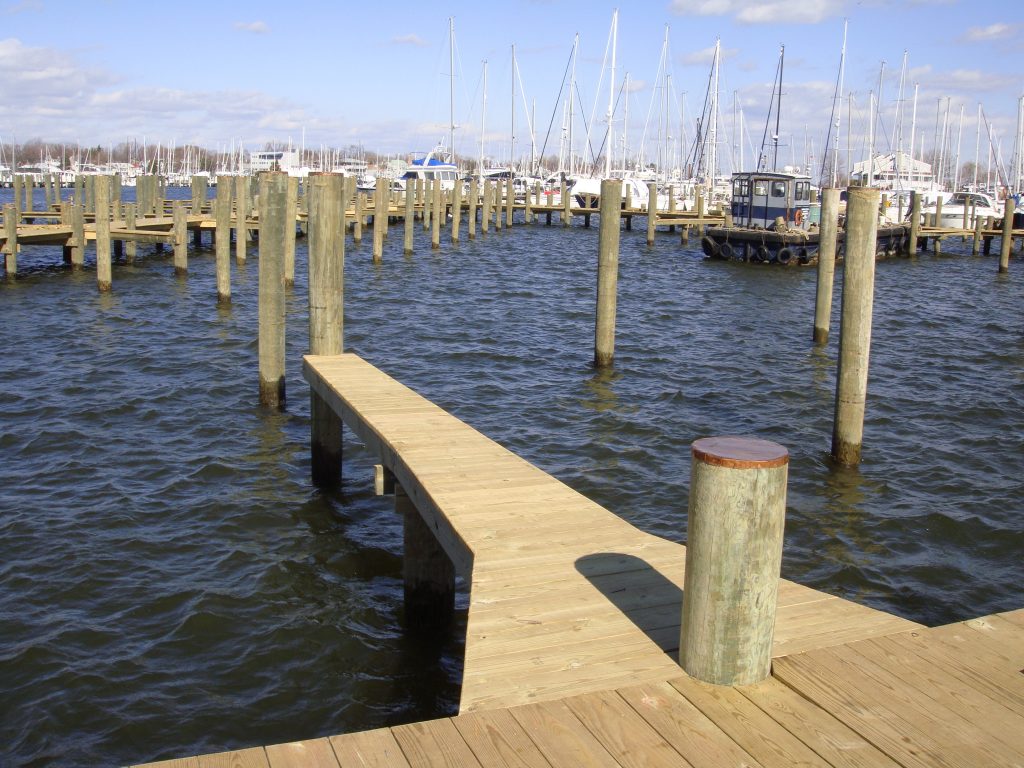Pilings may all look the same, but how your boat interacts with them is determined by their material and placement in your slip. Here’s a beginner’s guide to making the most of the pilings that make up your boat slip.

g
BOW PILINGS
Most wet slips have two pilings which designate the entryway to your spot. These are your “bow pilings”, and they stand freely. Tying your boat to these pilings prevents the bow from drifting. Your bow is the lightest area of your boat, and therefore, most likely to drift with wind or current. A drifting bow will cause drifting at the stern in the opposite direction, so a good tie here keeps your boat unaffected by the elements.
Although they are a savior to keep your boat safe from drifting, they can also be the cause of unnecessary damage. If your boat is tight in the slip, one mistake can throw your hullside into the piling for an expensive paint job. Same can happen to your swim platform if you’re not careful on entry or exit. Enter and exit your slip slowly and stay one step ahead of any wind and current to prevent costly contact with the piling.
Add padded protection to your bow pilings: PilePad 72″ or PilePad Mid 72″

g
DOCK PILINGS
Whether “dock piling” is the technical term or not, it should be. This is simply any piling connected to your dock. These are bunched closer together than bow pilings, usually have cleats close by. Dock pilings are usually located at the back half of your boat, usually to one side. You’ll tie spring lines from these pilings, and sometimes tie a line from dock pilings to your bow cleats for extra support.
Unlike bow pilings – which can engage your boat from a variety of angles while entering and exiting – dock pilings only interact with your boat at a 90-degree angle. Therefore, you only need to protect your boat from that one angle, but things don’t get easier because of it. Your boat is likely to be closer to these dock pilings more frequently, so barnacle growth and imperfections will cause damage when you’re not looking, for something as innocent as tying a line too loose or too tight. Your best defense to dock piling damage is a tight crossing line to the nearside stern cleat. If this line doesn’t let the boat connect with the dock at high tide, you’ve done your job.
Add padded protection to your dock pilings: PilePad Mid or PilePad Slim

g
MIDSHIP PILINGS
These pilings – placed opposite the dock at your boat’s midship – are a blessing but not used in every marina. These pilings are the least likely to cause damage and most likely to help you prevent it. By tying your boat to the free standing midship piling, you pull it off the dock and prevent the scratching/scraping against dock pilings.
Although a rare occurrence, damage from midship pilings still happens. Its more than likely to occur through contact of your swim platform on slip entry, or if your fenders fall out of place and your boat rubs against the piling for a long period of time.
Add padded protection to your midship pilings: PilePad Mid or PilePad


